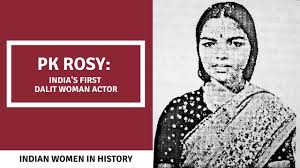The ugly aftermath of West Bengal’s ‘Dalit emancipation’

State administration and judiciary helped Dalits overcome barriers to worship in temples in Gidhagram and Debogram, leading to praise. The story didn’t end there. Subsequent economic boycotts and harassment of Dalits there show West Bengal’s long invisibilisation of caste stems from deep-rooted prejudice. Socially, it’s no different from other states
By now the whole country is fully aware how the administration and the Calcutta High Court have rightly forced two temples in West Bengal to allow Dalits, officially called Scheduled Caste (SC), to pray there, putting an end to centuries of discrimination, segregation and humiliation.
While it was the police and the government that helped Dalits enter the Shiv temple in Burdwan district’s Gidhagram, a High Court judge played a stellar role in stamping out the caste apartheid in another Shiv temple in Nadia district’s Debogram.
Both the cases caught a lot of Indians by surprise essentially because West Bengal is widely perceived as a progressive and egalitarian state, which not only witnessed powerful reforms movements against superstitions and caste inequalities stemming from the Brahminical order but had the good fortune of being ruled by communists for over three decades.
Naturally enough, the unprecedented and dramatic lifting of the bar on Dalits’ entry into the two temples received a lot of publicity in the print, electronic and social media. But the aftermath is not known to most people and merits immediate attention.
Firstly, away from the public glare, West Bengal Chief Minister Mamata Banerjee has been suddenly flooded with complaints from SC groups against countless temple managements across the length and breadth of the state which still keep them out. Buoyed by the recent victories in Gidhagram and Debogram, there is a flurry of demands by various Dalits bodies to compel many more places of worship to let the so-called low castes pray alongside the twice-born.
Currently, Mamata Di is in England but there are inside reports of the Chief Minister’s Office (CMO) forwarding Dalits’ complaints to District Magistrates and Superintendents of Police for remedial action – and the CM is being kept in the loop as per her own instructions due to the law and order angle.
Secondly, the backlash against the poor Dalits of Gidhagram is going virtually unreported by the very same media which breathlessly highlighted their victory. There is very little coverage of the economic blockade of Daspara — the untouchables’ enclave in Gidhagram comprising 130-150 mud homes.
The upper caste living in 800-1000 brick-and-cement houses have stopped buying milk from Dalits and are shooing them away from their groceries, leaving them with no other option but to travel miles to buy food and other essentials of daily use. Moreover, upper caste-owned auto rickshaws are refusing to ferry low caste passengers to teach them a lesson for raising their head. Besides hurling casteist slurs and openly issuing threats of physical attacks, even priests who are supposed to embody all that’s good and saintly, are bluntly refusing to assist Dalits in performing rituals before deities in the temple’s sanctum sanctorum.
They are no doubt getting the stick but do not regret forcing the administration’s hand to order the 200 years old temple’s management to let them in. Although the daily boycott is hurting them, it appears that they are still relishing their victory. The freedom to enter the temple is understandably intoxicating considering that for two centuries they were not even allowed to stand outside the temple lest their shadow defile Lord Shiv’s abode.
Unlike Uttar Pradesh and Bihar, West Bengal appears to be free from the scourge of casteism for two main reasons. Firstly, the western-educated, left-liberal Bengali middle and upper class, called the bhodrolok, or the social elite, has always denied the existence of casteism with a straight face. Jyoti Basu had famously said that caste simply did not exist in Bengal which was divided into two classes – rich and poor.
Secondly, there is hardly any caste-based violence unlike the Hindi heartland which is notorious for caste carnages, creating the illusion of a casteless milieu. Out of as many as 158,773 police cases from 2020 to 2022 under the Scheduled Caste and Scheduled Tribe (Prevention of Atrocities) Act of 1989, as few as 31 were registered in Bengal although it’s the fourth most populous state and is home to the second largest SC population after UP.
These factors have invisibilised casteism and sort of brushed it under the carpet!
But as Gidhagram and Debogram have suddenly brought to the fore in quick succession, caste oppression and tyranny are rampant in the state and must be curbed with a heavy hand by the state and society.
It’s instructive to recall what Upendranath Biswas, a Dalit IPS officer who nailed Lalu Prasad Yadav in the fodder scam and subsequently joined politics becoming the Minister for Backward Classes Welfare in the first Trinamool Congress government, once told me during an interview.
Quoting Ashok Mitra, ICS, Biswas said that the dominance of upper castes is so ruthless in Bengal that the low castes don’t dare to even launch an agitation against them; preferring to meekly accept their domination as divine dispensation. Biswas’ most telling argument was that Bengal’s upper castes – Brahmins, Kayasths and Baidyas — monopolize politics to the extent that the state has failed to produce a Jagjivan Ram, Ramvilas Paswan, Nitish Kumar, Lalu Prasad or Maywati, which show Bihar and UP in far better light than the so-called progressive and radical Bengal.
Biswas’ taunt-cum-sarcasm has obvious lessons for the political establishment. But will Mamata and the Leader of Opposition, Suvendu Adhikari, who keep flagging their Brahmin identity at the drop of a hat, ever heed Biswas’ wise words ?
Courtesy: Money Control
Note: This news is originally published on https://www.moneycontrol.com and is for use by the non-military/non-commercial community, especially those in the human rights sector.






